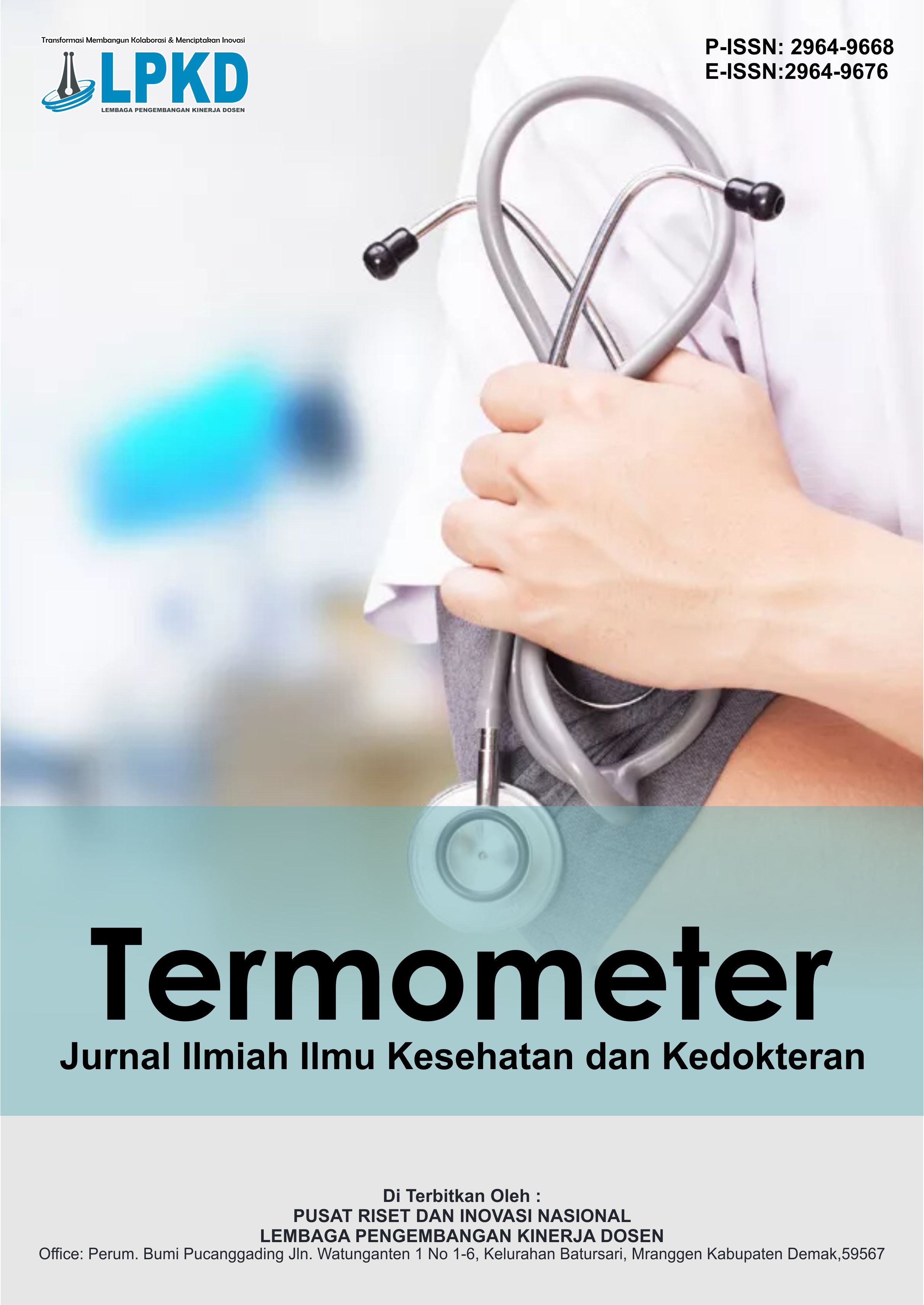Perdarahan Kepala Akibat Trauma
DOI:
https://doi.org/10.55606/termometer.v3i2.4922Keywords:
Head injury, Traffic accident, TraumatologyAbstract
Traumatology is the study of wounds and injuries and their relationship to violence. One of the major causes of death is head injury, which can cause trauma to both the outer and inner layers of the head. This head injury represents a significant health issue, with approximately 1.7 million people in the United States sustaining a head injury each year. Of this number, more than 52,000 people die, around 275,000 are hospitalized, and nearly 80% receive treatment and are referred to emergency departments. Males experience head injuries more frequently than females. Head trauma is the leading cause of death from trauma, with traffic accidents involving two- and three-wheeled motor vehicles being the most common cause. The primary factors contributing to head injuries are riders not wearing helmets, wearing helmets incorrectly, or using helmets that do not meet safety standards. These accidents often occur when riders fall or are involved in collisions, causing direct impacts to the head. Therefore, it is essential to raise public awareness about wearing helmets correctly and to enforce traffic regulations, especially those related to road safety, in order to reduce the incidence of head injuries and deaths caused by traffic accidents. Prevention through education and safety campaigns is also crucial in efforts to lower accident rates and head injuries.
Downloads
References
Andrian, W., Wahyuni, H., & P. Henny. (2023). Perdarahan intrakranial. Jurnal Riset Rumpun Ilmu Kedokteran, 150–165.
Dharmajaya, R. (2018). Subdural hematoma (pp. 34-55). USU Press.
Dharmajaya, R. (2018). Trauma kepala. USU Press.
Georges, A., & Das, J. M. (2023). Traumatic brain injury. In StatPearls [Internet]. Treasure Island (FL): StatPearls Publishing.
Howlett, W. P., & Howlett, W. (2012). Coma and transient loss of consciousness. Neurology Africa, 2(9), 213–225.
Jaffe, J., Melniychuck, E., Muschelli, J., Ziai, W., Morgan, T., Hanley, D. F., et al. (2012). Ventricular catheter location and the clearance of intraventricular hemorrhage. Neurosurgery, 70(5), 1258–1264.
Kamal, R. (2012). Acute subdural hematoma. In Textbook of Traumatic Brain Injury (pp. 158-168). New Delhi: Jaypee Brothers Medical Publishers.
Kelly, M. P., Guillaume, T. J., & Lenke, L. G. (2015). Subarachnoid hemorrhage and its complications. Neurosurgery Clinics of North America, 29, 296–321.
Manarisip, M. E. I., Oley, M. C., & Limpeleh, H. (2014). Gambaran CT scan kepala pada penderita cedera kepala ringan di Blu RSUP Prof. Dr. R. D. Kandou Manado periode 2012–2013. e-CliniC, 2(2), 1–6.
Munir, N. W., Indah, S. M., & Maryunis, M. (2021). Kualitas hidup pasien trauma kapitis berdasarkan QOLIBRI dan WHOQOL di RS Bhayangkara Makassar. Jurnal Kesehatan Vokasional, 6(3), 167.
Nabila, N. F., Fauzi, A. A., & Subagyo. (2019). Gejala pada lokasi perdarahan intraserebral yang berbeda pada pasien dewasa muda di RSUD DR Soetomo Surabaya. J. Kedokt. SyiahKuala, 19, 1–6.
Parinduri, A. G. (2017). Trauma tumpul. Jurnal Ibnu Sina Biomedika, 1(2), 29–36.
Reed, D. (2011). Initial management of closed head injury in adults (2nd ed.). NSW Ministry of Health Guideline. NSW Ministry of Health Guideline, 1–129.
Sano, H., Satoh, A., Murayama, Y., Kato, Y., et al. (2015). Modified World Federation of Neurosurgical Societies hemorrhage grading system. World Neurosurgery, 83(5).
Wu, T., Wang, Y., Xiong, T., et al. (2020). Risk factors for the deterioration of periventricular-intraventricular hemorrhage in preterm infants. Scientific Reports.
Downloads
Published
How to Cite
Issue
Section
License
Copyright (c) 2025 Termometer: Jurnal Ilmiah Ilmu Kesehatan dan Kedokteran

This work is licensed under a Creative Commons Attribution-ShareAlike 4.0 International License.










